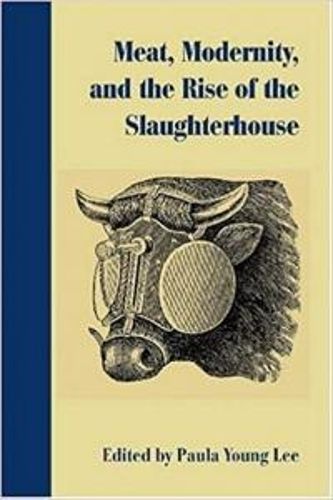Readings Newsletter
Become a Readings Member to make your shopping experience even easier.
Sign in or sign up for free!
You’re not far away from qualifying for FREE standard shipping within Australia
You’ve qualified for FREE standard shipping within Australia
The cart is loading…






Over the course of the nineteenth century, factory slaughterhouses replaced the hand-slaughter of livestock by individual butchers, who often performed this task in back rooms, letting blood run through streets. A wholly modern invention, the centralized municipal slaughterhouse was a political response to the public’s increasing lack of tolerance for dirty butchering practices, corresponding to changing norms of social hygiene and fear of meat-borne disease. The slaughterhouse, in Europe and the Americas, rationalized animal slaughter according to capitalist imperatives. What is lost and what is gained when meat becomes a commodity? What do the sites of animal slaughter reveal about our relationship to animals and nature? Essays by the best international scholars come together in this cutting-edge interdisciplinary volume to examine the cultural significance of the slaughterhouse and its impact on modernity.
Contributors include: Dorothee Brantz, Kyri Claflin, Jared Day, Roger Horowitz, Lindgren Johnson, Ian MacLachlan, Christopher Otter, Dominic Pacyga, Richard Perren, Jeffrey Pilcher, and Sydney Watts.
$9.00 standard shipping within Australia
FREE standard shipping within Australia for orders over $100.00
Express & International shipping calculated at checkout
Over the course of the nineteenth century, factory slaughterhouses replaced the hand-slaughter of livestock by individual butchers, who often performed this task in back rooms, letting blood run through streets. A wholly modern invention, the centralized municipal slaughterhouse was a political response to the public’s increasing lack of tolerance for dirty butchering practices, corresponding to changing norms of social hygiene and fear of meat-borne disease. The slaughterhouse, in Europe and the Americas, rationalized animal slaughter according to capitalist imperatives. What is lost and what is gained when meat becomes a commodity? What do the sites of animal slaughter reveal about our relationship to animals and nature? Essays by the best international scholars come together in this cutting-edge interdisciplinary volume to examine the cultural significance of the slaughterhouse and its impact on modernity.
Contributors include: Dorothee Brantz, Kyri Claflin, Jared Day, Roger Horowitz, Lindgren Johnson, Ian MacLachlan, Christopher Otter, Dominic Pacyga, Richard Perren, Jeffrey Pilcher, and Sydney Watts.